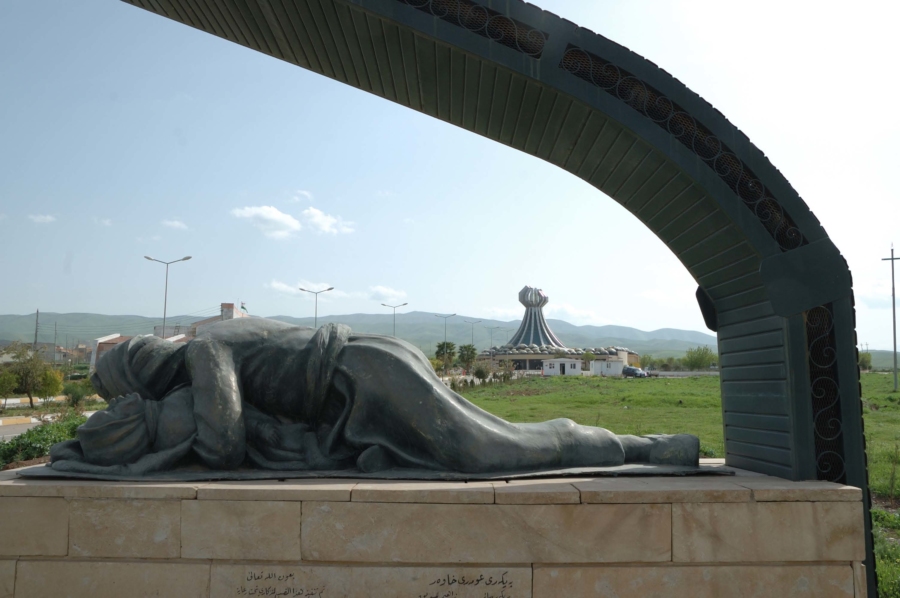The Great Mosque of Samarra is a mosque from the 9th century CE located in Samarra, Iraq. The mosque was commissioned in 848 and completed in 851 by the Abbasid caliph Al-Mutawakkil who reigned from 847 until 861. At the time of construction, it was the world’s largest mosque. It is known for its 52 metres high minaret encircled by a spiral ramp.
Shape — Great Mosque of Samarra (Malwiya), Salahaldin
 © صمم في العراق Designed in Irak
© صمم في العراق Designed in Irak
 © Wikimedia
© Wikimedia
The mosque had 17 aisles, and its walls were paneled with mosaics of dark blue glass. It was part of an extension of Samarra eastwards. The art and architecture of the mosque were influential; stucco carvings within the mosque in floral and geometric designs represent early Islamic decoration.

Al-Minārat al-Malwiyyah was originally connected to the mosque by a bridge. The minaret or tower was constructed in 848–852 of sandstone, and is unique among other minarets because of its ascending spiral conical design. 52 metres high and 33 metres wide at the base, the spiral contains stairs reaching to the top.
The minaret of Samarah is part of the Great Mosque in Samarah. The mosque was commissioned by the Abbasid caliph Al Mutawakkil (who reigned in Samarah from 847 to 861) in 848 and completed in 851.
The Great Mosque of Samarah was for a time the largest mosque in the world. Its minaret, the Malwiya Tower, is a spiraling cone 52 meters high and 33 meters wide with a spiral ramp.
 © صمم في العراق Designed in Irak
© صمم في العراق Designed in Irak
 © صمم في العراق Designed in Irak
© صمم في العراق Designed in Irak








